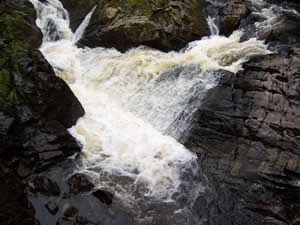 Sediments constitute an important component of the natural heterogeneity of river systems. However, the problems associated with fine reactive suspended particle matter (SPM) in rivers and co-transport of sorbed pollutants means sediment is becoming increasingly recognised as a key diffuse pollutant. SPM is particularly a problem in lowland agricultural catchments due to accelerated soil erosion through cultivation and cattle access to watercourses. Here sediments have a key role in nutrient and microbial diffuse pollutants and cause physical habitat degradation for plants, invertebrates and fish. In-stream production of phytoplankton and biofilms can contribute highly bioavailable particulate organic matter which is an important energy source to further up aquatic food webs but, in excess is symptomatic of eutrophication.
Sediments constitute an important component of the natural heterogeneity of river systems. However, the problems associated with fine reactive suspended particle matter (SPM) in rivers and co-transport of sorbed pollutants means sediment is becoming increasingly recognised as a key diffuse pollutant. SPM is particularly a problem in lowland agricultural catchments due to accelerated soil erosion through cultivation and cattle access to watercourses. Here sediments have a key role in nutrient and microbial diffuse pollutants and cause physical habitat degradation for plants, invertebrates and fish. In-stream production of phytoplankton and biofilms can contribute highly bioavailable particulate organic matter which is an important energy source to further up aquatic food webs but, in excess is symptomatic of eutrophication.
The complexity of issues for SPM is currently a challenge for water management such as the Water Framework Directive. There is a requirement to understand the balance between the natural and perturbed state in terms of amounts and characteristics of river sediments and the close linkage between terrestrial land management and sediment biogeochemistry and river impacts.
Our research aims to better understand spatio-temporal differences in the nature of sediments and their ecosystem interactions within connected river reaches. This is essential in order to provide guidance on: (i) catchment measures to minimise sediment erosion sources, (ii) lags in effects following mitigation activities due to sediment water interactions (phosphorus exchange, sedimentation and resuspension dynamics), and (iii) ecosystem stressors both directly and indirectly through the presence of sediments.
Our research in this area focuses on these areas and questions:
- Can we develop methodologies to link the combined influences of catchment land use, seasonality and river flow conditions to the use of river sediments as indicators of ecosystem nutrient status
- How important are losses of particulate organic carbon (POC), relative to dissolved organic carbon (DOC)? Does POC represent losses of previously stored terrestrial soil carbon (as opposed to recent photosynthetic carbon)? Does POC control ecosystem productivity more than DOC in rivers?
- In terms of phosphorus exchange between river bed sediments and the water column in catchments with diffuse and point sources of pollution, are bed sediments sources or sinks or river P?
- What are the links between sediment surface characteristics, mobilisation and microbial pathogen transport and infectivity?
Who is working in this area?
- Marc Stutter
- David Lumsdon
- Lisa Avery
- Nikolai Friberg
|
Updated: 23 Jan 2024, Content by: MC
|

